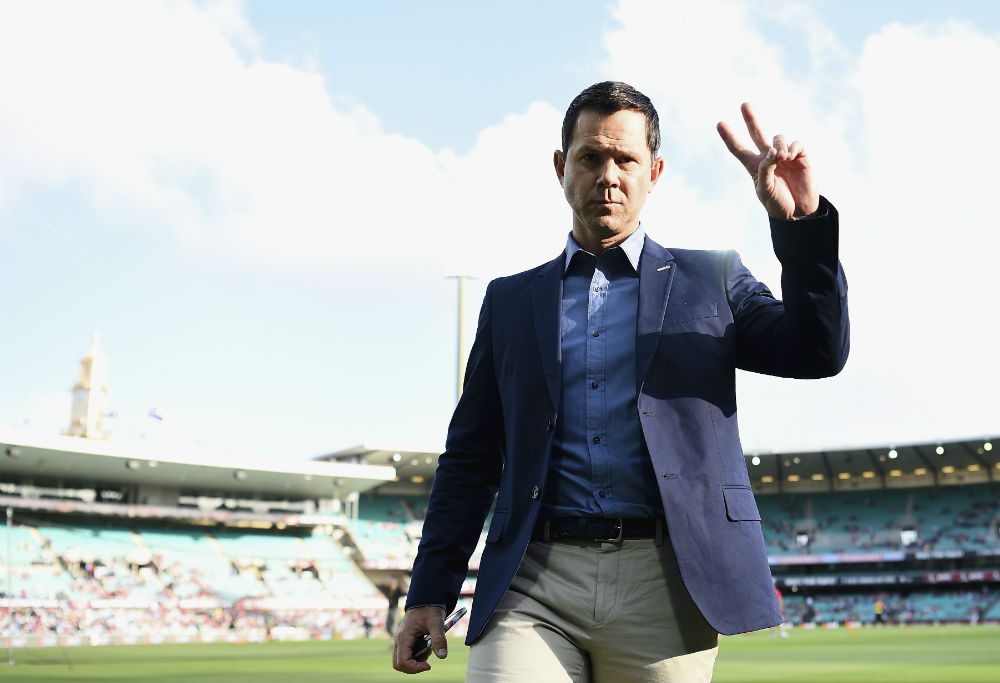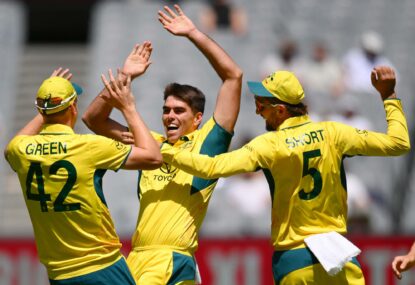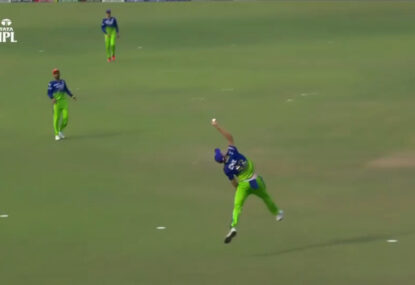Tasmania have made the Sheffield Shield final. The last time that happened, it ended in a Tasmanian win.
It also served as Ricky Ponting’s farewell to Australian cricket as a player. He had already retired from the Australian Test team by 2013, having been dropped from the ODI team in 2012 and deciding in 2009 that winning World T20s could be the responsibility of another player.
But I hadn’t been in Australia when he left at the WACA. Overseas on holiday from the moment of the second day of the preceding Test in Adelaide, it was only after Ponting’s final Test that I learned of his retirement, when I finally looked at another newspaper on a train in London.
Ponting wasn’t done yet. He went onto play for the Hobart Hurricanes, doing well as an opener, fielder and even as a crowd bowler, at least in situations where the opposition had little to no chance of winning.
Hobart didn’t win that BBL – haven’t won any a BBL title – and seeing Ponting in the Sheffield Shield seemed more natural, particularly as it was the last season of Tasmania’s golden era.
They not only made that final but unlike the previous year, earned the right to host it. The result was quite possibly the slowest pitch ever seen in Bellerive.
While Darren Lehmann’s complaint overlooked the fact that the pitches after the BBL had been more similar in character to the one his team had played on before the BBL – a green pitch that makes me laugh thinking about everyone who thought the Test in 2011 had been played on too friendly a surface – he had a point.
Yet Tasmania almost took it too far. By the time of Tasmania’s second innings, they were so far ahead in the game that they nearly had the option of enforcing the follow on.
It was never a likely decision for George Bailey, but a 194-run lead meant that Queensland needed to bowl Tasmania out in a fraction of the 173.4 overs it had taken in the first innings.
Ryan Harris nearly did it on his own.
Ricky Ponting’s last dismissal in a Sheffield Shield match was to a ball that was reverse swinging on a perfect length. In the seventh over. He guessed that he had to leave it, and he guessed wrong. The finger went up immediately on appeal.
Jordan Silk, the centurion in the first innings, had already fallen to Harris. James Hopes had taken care of Mark Cosgrove. Alex Doolan, Ponting’s partner at the time and maybe the main individual beneficiary of Ponting’s time in the Tasmanian team after his Australian career, was joined by George Bailey.
Harris needed only two balls to get rid of him. In the eleventh over, Harris gave Jonathan Wells a near-identical ball to the one he bowled to dismiss Ponting. Wells played in much the same way. The only difference was that his pad wasn’t in the way.
Tasmania’s deep batting line-up saved them, but only just.
By the fourth innings, Queensland was determined to ensure that Tasmania would not bowl them out twice, even if it made zero impact on the final score.

(CA/Cricket Australia/Getty Images)
They didn’t get bowled out. Not a single over of spin was bowled by Tasmania in the match. Xavier Doherty was in India, Jason Krejza was in India and Harry Allanby was twelfth man.
That team resembled a domestic version of not so much the Australian team that Ponting had spent so much of his time in, but the South African side of his later years, the one that had defeated his team in his final Test, that he had come to deeply respect and see as the benchmark – at the time – for all sides.
Yet the moment that seemed most representative of Ponting didn’t happen on the field in that game, although it was televised. It came in a news report on Tasmania’s triumph.
Normally, I don’t care much for the habit of inserting a camera into the middle of these things but seeing Ponting in this circle is an instructive exercise. Dominating the world, and trying to dominate again with a different generation, had left a gap in the trophy cabinet at home that he badly wanted to fill.
There are players who wouldn’t have cared about that last triumph, especially not when you consider Ponting’s opportunities on the T20 circuit – he went onto the IPL and the CPL’s inaugural season after that Australian summer.
Not Ponting. Look at that video, and you will see someone who didn’t stop placing his team’s success at the heart of what he wanted in the game of cricket. Sometimes, he could take that too far, and it could make him look churlish.
His run-in with Aleem Dar in 2010 is the best example of that point, and there are other examples. But Ponting’s energy as a player was primarily channelled towards the good of cricket, and the excesses stand out because they were the exceptions to the rule.
When cricket returned to Australia later in 2013 for the next season, Ponting had turned from a Sheffield Shield player to a BBL commentator. Australian cricket hasn’t quite become the latter yet.






































































































